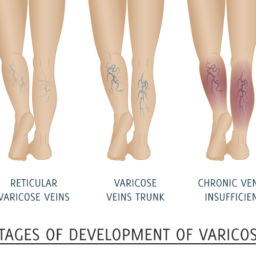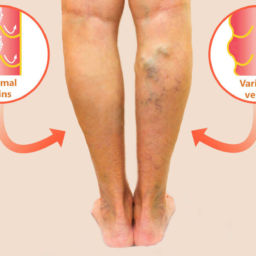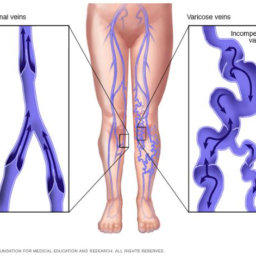
How Laser Treatment Works For Varicose Veins
Are you embarrassed about your bulging purple or red patches of varicose veins and tired of hiding them? Summer fun with friends and family often means shorts and bathing suits, especially in hot, humid climates like Florida. If you suffer from the discomfort and embarrassment of varicose veins, you may be wondering if laser vein treatment can help.
Worrying about your health while hiding this potentially unhealthy and uncomfortable condition is no way to live. Fortunately, laser vein treatments today rarely require surgery. With fast and effective Laser Vein Treatment, you could comfortably and confidently participate in all the summer’s fun without worry.
How to Quickly Get Rid of Your Varicose Veins With Laser Treatment
Feeling good about your appearance is vital to your self-confidence and happiness. However, there is more to consider than just how your legs look in a pair of cute shorts. Varicose veins can have more than just a visual impact.
In fact, varicose can be an early symptom of more serious venous diseases that, if not correctly diagnosed and treated, can cause serious health complications.
Historically, varicose veins have been dismissed as a cosmetic issue that only concerns women. Unfortunately, that outdated thinking has persisted, partly because it is twice as common in women as men. However, current research from the Society for Vascular Surgery suggests that women’s cardiovascular systems age faster than men’s, and you should not lightly dismiss early symptoms of vascular abnormality.
Venous abnormalities affect an estimated 50% of the population. Regrettably, although significant research studies indicate varicose is an early symptom of venous disease, it continues to be seriously overlooked by healthcare providers.
Your First Step Is Understanding Varicose
You already know the heart is a pump that powers your cardiovascular system, a pressurized, closed-loop that constantly circulates. You are also probably familiar with how heart valves control blood flow out through the loop of arteries and back via the veins.
Many people don’t know that more valves are working inside the veins throughout the loop. Yet, they are essential to the system’s efficiency. These vein valves assist in controlling the blood pressure in your extremities, further from the heart. They also keep blood moving in the right direction between heartbeats.
Venous Reflux is the medical term for when these vein valves fail to perform adequately. Poorly controlled pressure inside the vein causes varicose, described as weakening vein walls. Pressure on weakened, incompetent vein walls causes them to stretch, enlarge, twist, and even leak.
Incompetent veins are categorized into three progressively worsening subsets:
Telangiectasia’s are commonly called spider veins because they look like delicate webs. These traces of thin red or blue veins just under the skin are usually the first to appear and most easily treated.
Reticular Veins are more significant veins that can appear to be feeding into spider veins and are thus sometimes referred to as feeder veins. These enlarged and twisting veins of blue and purple are easily seen through the skin.
Varicose Veins are large blue or purple veins that have enlarged, twisted, and knotted to the extent they bulge up under the skin creating visible lumps.
Your Next Step is Consulting with a Vein Specialist
Here’s why consulting with a healthcare provider specialized in vein care will give you the most accurate diagnosis, prognosis, and treatment options.
- General healthcare providers are unlikely to have the depth of knowledge and experience in Phlebology (the study of blood and veins) needed to make an accurate diagnosis and perform treatments.
- Specialized Vein Doctors are Vascular Surgeons or Phlebologists with in-depth education and training specifically for vascular health and care.
- A vein doctor uses Ultrasound Sonography to map your veins and blood flow, along with additional precision techniques to check blood pressure in your extremities.
- Vein doctors study the newest research and cutting-edge laser vein treatments to understand the benefits and perform those treatments skillfully for their patient’s best outcome.
What Is Laser Treatment?
Laser treatment uses intense light that creates thermal energy to shrink vein tissue. The heated tissue contracts, pinching the vein closed, resulting in scar tissue forming and permanently closing the vein. Without blood flow, the now unuseable vein is invisible, and the tissue is reduced. Laser treatments are available for minor and more significant vein abnormalities.
The treatment of more prominent reticular and varicose veins uses a technique called Endovenous Laser Ablation (EVLA). While relatively new, research over the past two decades has established laser ablation as an efficient treatment for varicose veins.
- Endovenous means “inside the vein.”
- A laser is a device that produces a very controlled thermal energy or heat.
- Ablation, in medical terms, means to remove tissue. It is typically paired with a word indicating the removal method, such as thermal.
Until recently, your more prominent varicose could only be treated by surgical ligation or vein stripping. Fortunately, today, non-surgical, minimally invasive Endovenous Thermal Ablation is primarily used to effectively treat larger reticular and varicose veins.
What To Expect If You Decide On EVLA Laser Treatment
Here is what happens if you and your vein doctor determine if EVLA treatment is proper for you:
- You schedule the treatment and arrange for a ride home after your outpatient procedure.
- The procedure takes around an hour and only requires a local anesthetic to numb the area to be treated.
- A small incision in the area of the incompetent vein allows a tiny catheter containing a laser fiber to be inserted into a nearby vein. Using Doppler Ultrasound as a visual aid, the catheter is threaded through the incompetent vein before the laser is activated.
- Once activated, the laser emits heat pulses and is slowly pulled back through the incompetent section as the catheter withdraws. Blood circulation continues through your remaining healthy veins.
- The laser is deactivated, the catheter is pulled out, and the incision is bandaged, usually not needing any stitches. You will be immediately up and walking around!
What You Should Expect After Laser Vein Treatment
You will be sent home with simple instructions such as avoiding strenuous activity and wearing supportive compression stockings.
Over the next 1-2 weeks, as you heal, you should expect some bruising, swelling, and soreness in the treated area. However, most people can immediately resume normal everyday activities.
The veins fade from view as residual blood is absorbed and the now unused tissue shrinks. As excess fluid and bruising diminish, your legs feel better, becoming smoother and healthier.
Why Let Another Summer Pass You By?
If you are tired of worrying, hiding, or suffering, stop waiting and see a vein doctor now! Get an accurate diagnosis from a specialist and get the treatment you need to feel confident and comfortable.
- You may find you only have superficial spider veins easily treated with laser vein therapy.
- You may find your varicose is more advanced, making you a candidate for EVLA laser treatment.
Either way, you will be taking action towards improved health and happiness. With over 20 locations located in South Florida as well as West Florida, Certified Foot & Ankle Specialists conveniently provides the best care available. Contact us today for help!
The comprehensive team at Certified Foot & Ankle Specialists is devoted to caring for your lower legs, feet, and ankles. Our expert staff includes Vascular and Vein specialists with the knowledge to diagnose and treat your varicose veins using state-of-the-art equipment, top-notch laser vein treatments, and the latest techniques.
Click here to make your appointment now.






